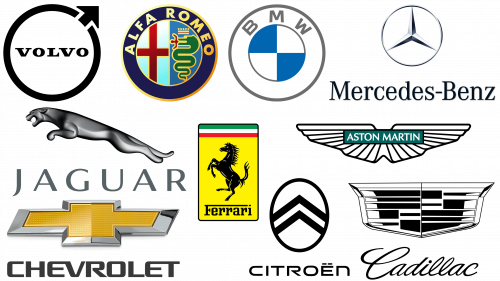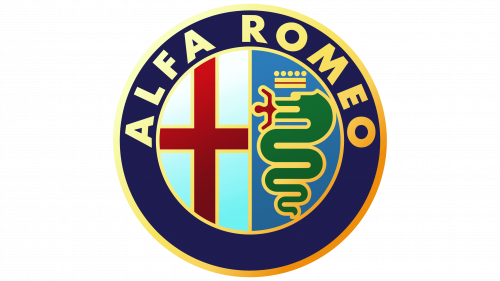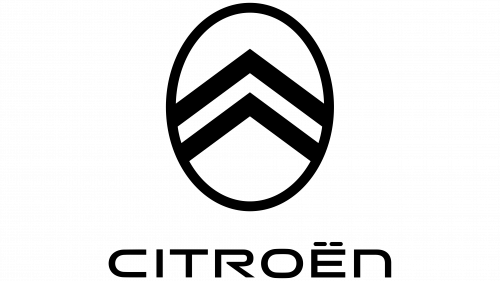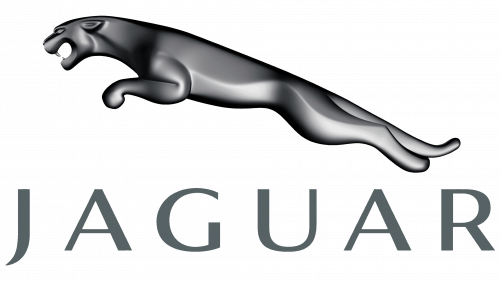Car logos have always held a distinct position in the realm of branding. These symbols carry a legacy that knows no bounds. While some logos house intricate details, like the serpent in Alfa Romeo’s emblem, their minimalist approach often makes them memorable and instantly identifiable.
When you consider the magnitude of a car’s purchase – often one of the most significant investments an individual makes – the logo represents more than just branding. It stands as a mark of distinction, symbolizing the owner’s choice and the brand’s excellence in design and engineering. Some of these emblems have withstood the test of time, having roots that trace back over a century, showcasing their enduring appeal.
Alfa Romeo logo
The Alfa Romeo emblem is not just another automotive logo wrapped in history and symbolism. On the left, a bold red cross stands out. This cross is not just a design choice; it symbolizes Milan, the birthplace of Alfa Romeo. This half of the emblem reflects the heritage and cultural significance of the city.
The emblem depicts a snake that appears to be devouring a human figure. Historically, the design is believed to have been inspired by Otone Visconti, a Milanese knight who participated in the First Crusade. According to legend, after defeating a Saracen enemy in battle, Visconti adopted the image of a snake and a man from the shield of the defeated enemy.
Alfa Romeo offers a different interpretation of its emblem. Instead of depicting a man being devoured, the automaker suggests that the man emerges from the snake. This act is not one of consumption but of rebirth and rejuvenation. In this way, the symbol becomes a testament to the renewal and cyclicality of life.
Aston Martin logo
Originally from the UK, the Aston Martin emblem is a testament to the timeless elegance of automotive logos. 2022 was a watershed year for this iconic symbol: Peter Saville gave it a refined look. He conveyed the brand’s rich heritage effortlessly by choosing a solid racing green background. He simplified the design by removing the superfluous semicircular detail on the fenders, giving it a cleaner and more modern look.
Although the changes were nuanced, the emblem did not appear too austere or lacking in character.
BMW logo
The BMW emblem, with its iconic blue and white squares, is not just an emblem but an indication of the company’s origins in the picturesque land of Bavaria, Germany. These colors symbolize its geographical roots and serve as a testament to the brand’s longstanding commitment to excellence and innovation in the automotive industry.
In March 2020, BMW decided to breathe new life into this iconic symbol. The transition from metallic sheen to the updated logo is done in a flat, minimalist style. Gone are the tangible 3D effects and the play of light and shadow. Instead, the emblem acquired transparent borders, abandoning the massive outer ring, which was a significant difference from its predecessors. This decision, despite its apparent simplicity, was a strategic move towards modernization.
The move to a more streamlined design was not without criticism. The automotive internet community, enthusiasts, and design fans initially expressed doubts about the need for such a change. However, after several months, it became obvious that the updated emblem is not only aesthetics. It proved adaptable and versatile, well-received on tangible media such as car hoods and dealership signage and on increasingly important digital platforms, from websites to mobile apps.
Cadillac logo
The Cadillac logo is an emblem of intrigue and departure from the norm. Its intricate design is perplexing, but it is this distinction that cements its place in the pantheon of iconic automotive logos. The deviation from the standard, particularly the move to a monochromatic palette, has undoubtedly sparked debate, but this daring to be different is eye-catching.
If you delve deeper into the history of its origins, you’ll find an even more intriguing story. While many automotive brands have drawn inspiration from regional symbols and heraldry, the Cadillac emblem is rooted in embellished history. In 1902, the brand decided to emulate the fictional family crest of French explorer Antoine de la Mothe Cadillac, who is credited with founding Detroit in 1701.
But there’s a twist here. Like de la Mota Cadillac’s aristocratic pretenses, the coat of arms was fictitious. He invented an identity with a name suggestive of nobility to enhance his social standing. Once in America, without verifying his origins, he created the coat of arms by combining elements from different sources. The chosen color bands were symbolic, each denoting noble traits: courage, honesty, and bravery.
The original version of the coat of arms was characterized by a variety of elements: crowns, wreaths, and even a flock of ducks, but later it was finalized. However, even in this form, the Cadillac emblem retains its intricate charm, which makes it one of the most recognizable on the streets.
Chevrolet logo
The history of the most iconic automobile logos can be as intriguing as the logos themselves, and Chevrolet’s bowtie emblem is a prime example. Its origin is still mysterious: family members of the founder of the brand, William C. Durant, talk about it in different ways.
According to one version told by Durant, he had an epiphany during a stay in a French hotel, where a special pattern of wallpaper struck his imagination and eventually resulted in the famous “bow tie.” The pattern even made its way into Chevrolet’s golden anniversary literature.
Durant’s wife, Catherine, traced the history of the emblem’s creation to a 1911 advertisement she and Durant stumbled across. The ad was for Coalette fuel and bore a striking resemblance to a “butterfly.” Their daughter Marjorie recalled an anecdote about how her father spontaneously came up with the design during dinner when he was casually doodling between courses.
Celebrating its centennial, the company candidly admitted that the true genesis of its iconic logo remains a mystery.
Citroën logo
Citroën’s recent logo redesign masterfully blends contemporary sensibilities with the brand’s rich history. By revisiting its 1919 design featuring two chevrons encased in an oval, the brand managed to capture a feel that’s simultaneously fresh and nostalgic.
The modern iteration boasts streamlined adjustments and employs a refreshed color scheme, reflecting the brand’s evolving identity while preserving its roots. The iconic chevrons draw inspiration from a unique double herringbone pattern in Polish metal gears from the early 20th century. André Citroën, the company’s founder, came across this innovative system during a trip to Poland. Recognizing its potential, he promptly acquired the patent, making it a pivotal element in the brand’s identity in France.
Ferrari logo
Ferrari’s iconic “galloping horse” emblem originates in an unexpected place: on the fuselage of a World War I fighter plane piloted by Italian ace Count Francesco Baracca. This emblem, closely associated with speed and power, was a symbolic part of Baracca’s airplane. After the war, Baracca’s parents, realizing the potential power and charm of this symbol, suggested that Enzo Ferrari adopt the “running horse” as a mascot for his racing endeavors.
In 1929, when Enzo Ferrari laid the foundation for the Scuderia Ferrari racing team, he integrated the emblem by adding a canary yellow background to pay homage to his homeland, Modena. This decision proved to be a successful one, as over the years, the emblem has become synonymous with luxury, speed, and unrivaled craftsmanship. It is noteworthy that the Ferrari brand is not limited to cars, and goods with its image bring significant income.
But there is a dark subtext to this story. Count Baracca, the original bearer of this symbol, died tragically in battle. In memory of him and the origin of the symbol, Ferrari decided to depict the horse in black instead of red to honor the memory of the dead pilot, who indirectly gave rise to one of the most recognizable logos in automotive history.
Jaguar logo
The leaping jaguar, an emblem synonymous with speed, skill, and dynamism, is a memorable figure in automotive logos. Often rendered in understated shades of black, gray, and gold, this emblem reflects a combination of sophistication, reliability, and peak performance. These colors also evoke the sense of luxury and sophistication that the brand prides itself on.
In the old days, on the hoods of vintage Jaguar cars, one could see a graceful image of a jaguar gracefully emerging from the hood and serving as a symbolic hood ornament. However, in keeping with modern pedestrian safety requirements, these tangible symbols had to be removed. However, the spirit of the wild cat has remained intact and continues to adorn the brand’s emblematic images. This abiding presence persists even amidst the brand transformation of the parent conglomerate, hinting at the past controversy surrounding the JLR logo.
Mercedes-Benz logo
The emblematic three-pointed star of Mercedes-Benz is an enduring testament to impeccable German craftsmanship and unrivaled quality. However, the genesis of this iconic symbol is steeped in a personal and touching story. At the end of the 19th century, Gottlieb Daimler, a visionary in the automotive industry, drew a star on an illustration of his residence, hinting at his aspirations for future prominence in the industry.
It was this star that was officially registered as a trademark of the Daimler-Motoren-Gesellschaft in 1909. As time passed and the business grew, a merger took place in 1926, resulting in a new company known as Mercedes-Benz. This merger resulted in the Benz laurel wreath in 1926, which was simplified to a ring by 1933. In addition to its rich history, the triadic configuration of the star reflects Mercedes-Benz’s ambitious goal of asserting its supremacy in three spheres: the vastness of the ocean, the vastness of the sky, and the vastness of the earth.
Volvo logo
Renowned Swedish automaker Volvo recently opted for a more simplistic approach to its emblem, going from a metallic sheen to a flat design. This updated look has sparked a variety of opinions, but there is an intriguing story associated with the emblem that many may find interesting. The emblem dates back to ancient times and symbolizes Mars, the Roman god of war. It also serves as an emblem of iron in alchemical traditions and is a universal symbol of masculinity.
In search of an emblem that reflected a desire for durability, safety, and reliability, Volvo incorporated this circle in the 1920s in the form of an upward pointing arrow. The name “Volvo” comes from the Latin verb “volvere,” which means “to roll.” Interestingly, while one might assume it refers to the movement of automobiles, the connection here is coincidental. The term was originally chosen because the company’s first products were not automobiles but ball bearings.













